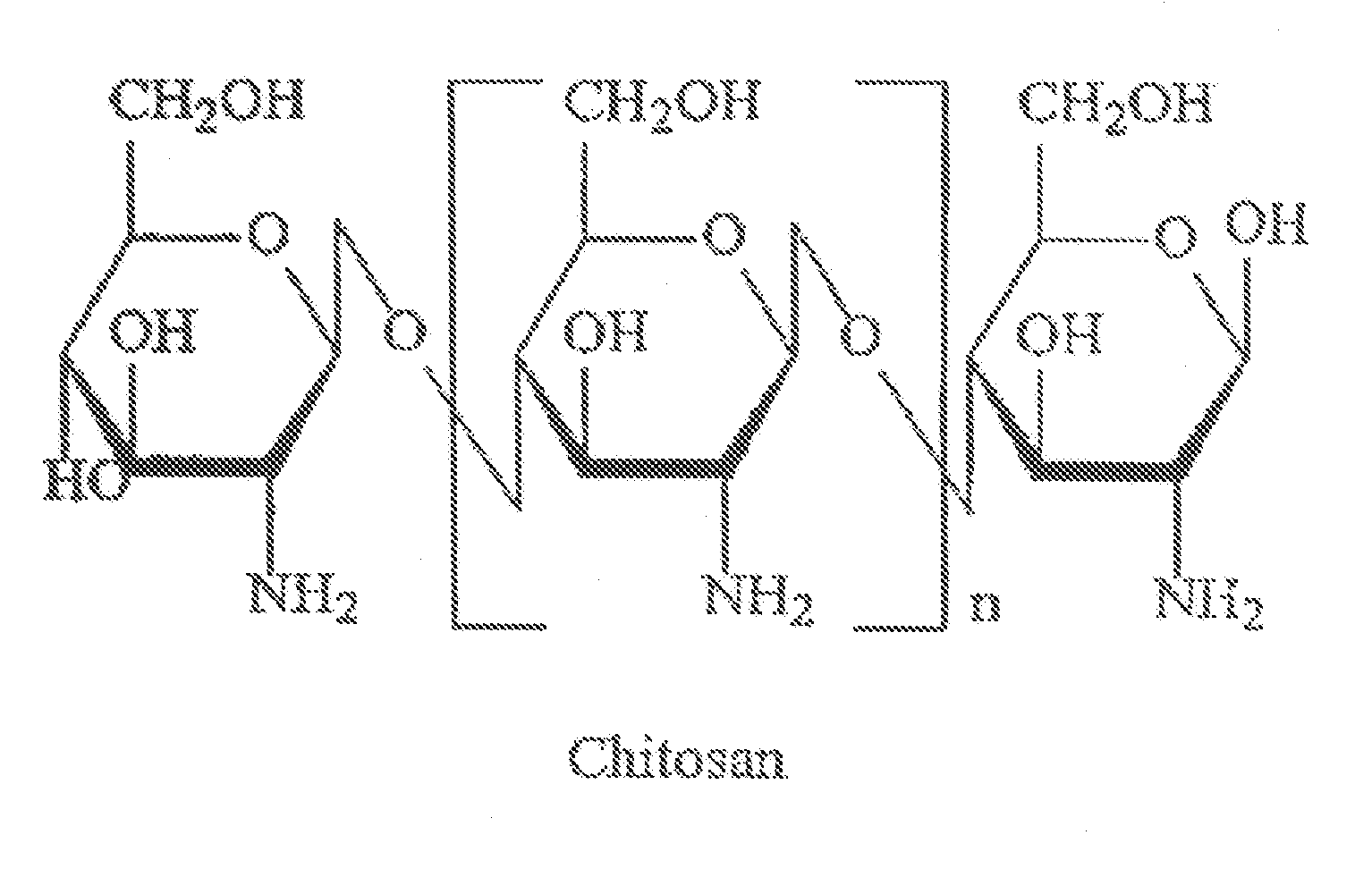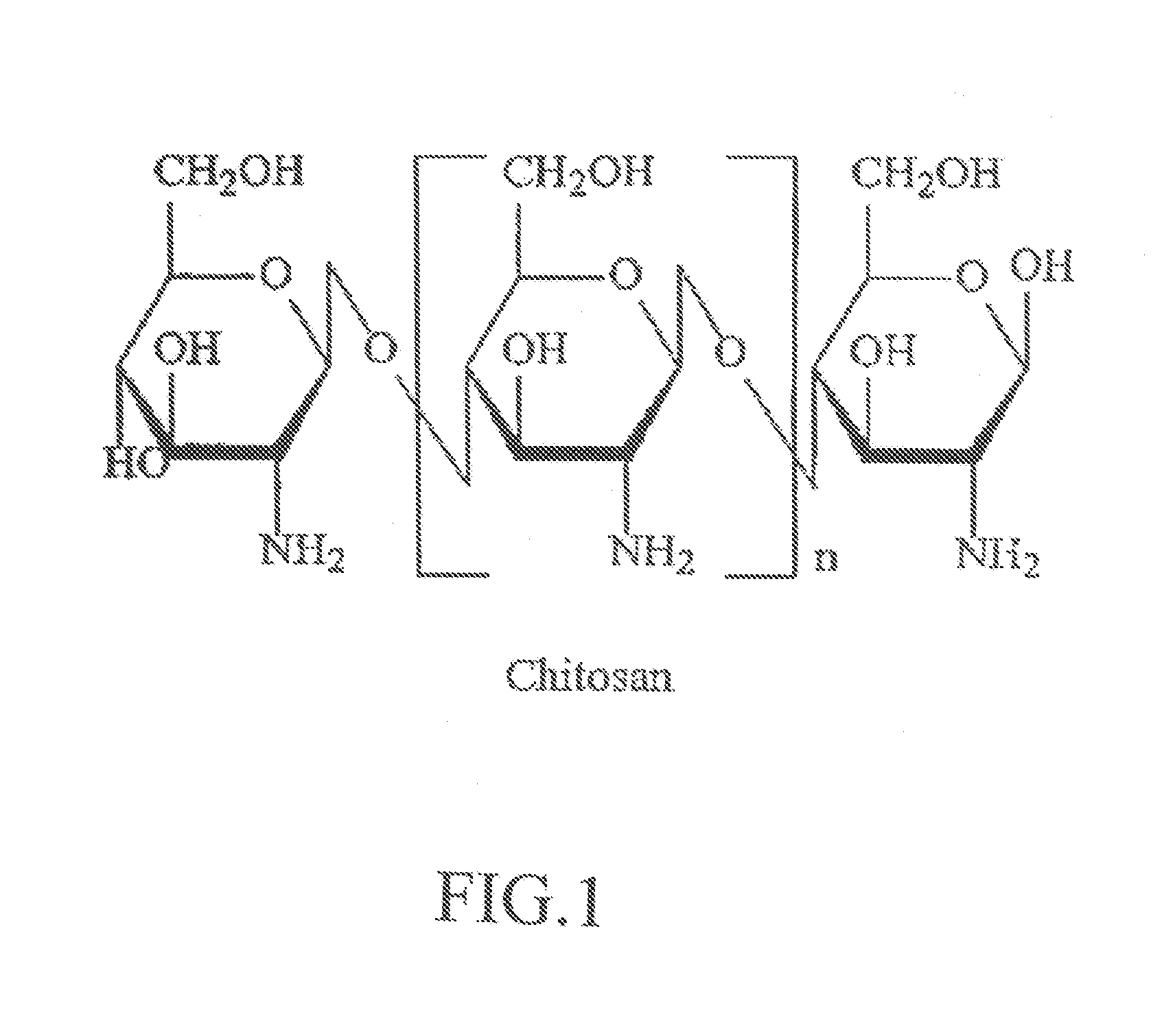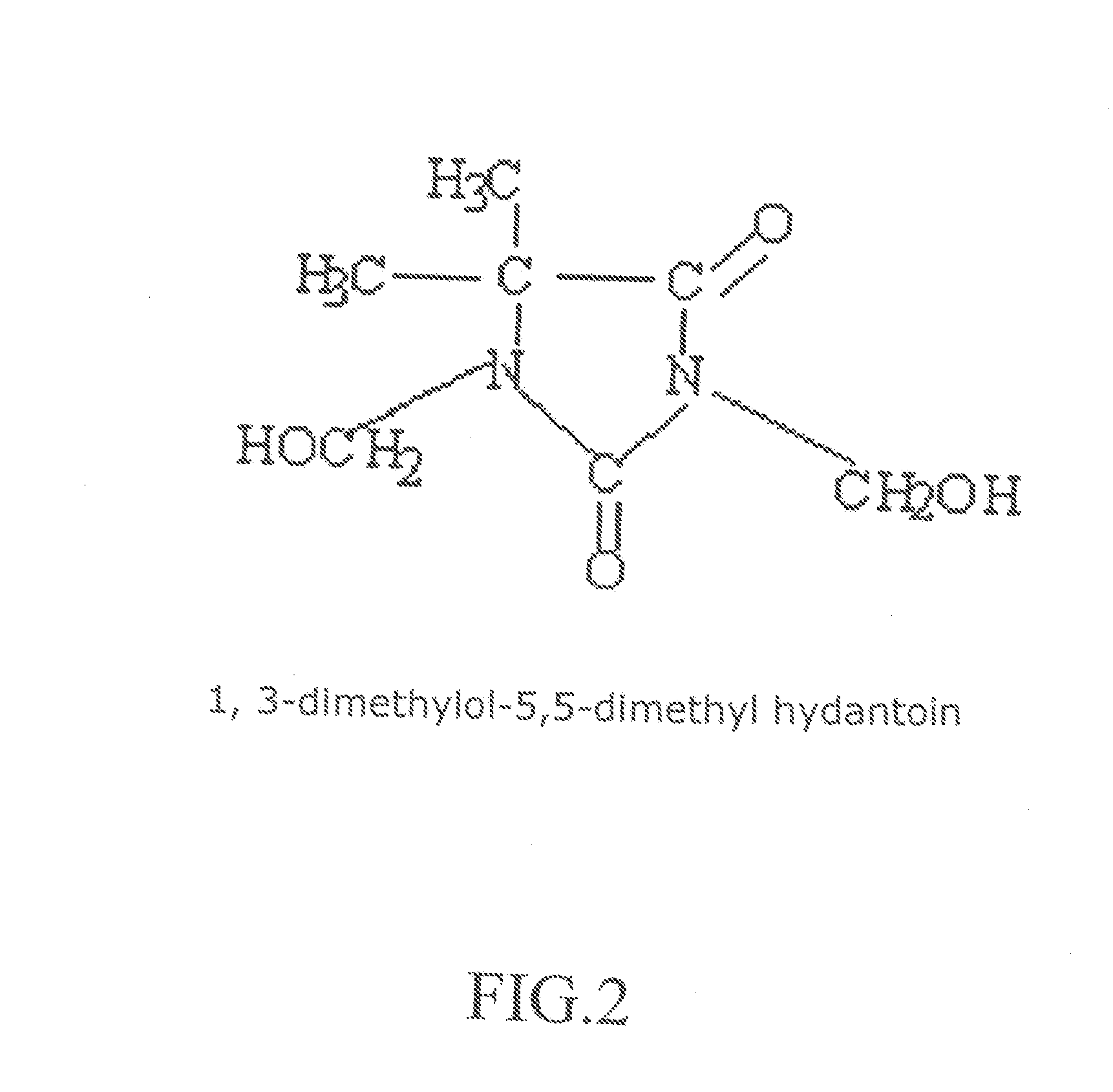Process for Anti-microbial textiles treatment
a textile fabric and antimicrobial technology, applied in the field of textile textile antimicrobial textile treatment, can solve the problems of limited durability of biocidal properties, large increase in healthcare costs, and large amount of biohazardous waste generated, and achieves the effects of broad biocidal activity, durability and efficacy of antimicrobial properties, and convenient preparation
- Summary
- Abstract
- Description
- Claims
- Application Information
AI Technical Summary
Benefits of technology
Problems solved by technology
Method used
Image
Examples
example i
[0092]This example illustrates the finishing of fabrics with Chitosan, monomethylol-5,5-dimethythydantoin (MDMH).
[0093]A finishing bath containing 16 grams of Chitosan (10.0%), 24 grams of monomethylol-5,5-dimethylhydantoin, (55%) in 800 milliliters of deionized water was prepared. The pH of the finishing bath was adjusted to 3.0 with one milliliter of 0.1 N HCl solution. Then, 150 grams of pure cotton fabric (X-011) and 150 grams of cotton / polyester (35 / 65) blend fabric (X-012) were dipped in the bath for more than two minutes and padded through a padder with a more than 65% pick-up rate. The fabrics were dipped and padded again, and dried at 80 degree C. for 3 minutes. The fabrics were then cured at 160 degree C. for 2 minutes. Finally, the finished fabrics were machine washed with 300 grams Detergent at a low water level and a temperature of about 60 degree C. for 20 minutes. The fabrics were dried and weighed, yielding 31.7 grams (1.00% add-on) of the cotton fabric and 240.6 gra...
example ii
[0095]This example illustrates the finishing of fabrics with Chitosan, 1,3-dimethylol-5,5-dimethylhydantoin (DMDMH).
[0096]A finishing bath containing 32 grams of Chitosan, 48 grams of 1,3-dimethylol-5,5-dimethylhydantoin (DMDMH), in 1200 milliliters of deionized water was prepared. The pH of the finishing bath was adjusted to 3.0. Then, 180 grams of pure cotton fabric (X-011) and 180 grams of cotton / polyester (35 / 65) blend fabric (X-012) were dipped in the bath for more than five minutes and padded through a padder with more than an 70% pick up rate. The fabrics were then cured at 160 degree C. for 2 minutes. Finally, the finished fabrics were machine washed with Detergent at a low water level and a temperature of about 60 degree C. for 30 minutes. The fabrics were dried and weighed, yielding 100 grams (1.5% add-on) of the cotton fabric and 145.5 grams (1.62% add-on) of the cotton / polyester blend fabric.
[0097]Antibacterial properties of the fabrics were tested against representative...
example iii
[0098]This example illustrates the qualitative antibacterial study of the Example I finished fabrics carried out using the AATCC Test Method 147.
[0099]Fabric samples of X-011 and X-012 were finished in a manner similar to that set forth in Example I. The concentration of the finishing agent used was from about 5 to 10% in the finishing of the cotton fabrics and from about 5 to 15% in the finishing of the cotton / polyester (35 / 65) blend fabric because of the lower concentration of cellulose in the blend. The final biocidal property was imparted onto the finished fabrics. Qualitative antibacterial tests were conducted according to AATCC Test Method 147.
[0100]In the AATCC Test Method 147, two pieces of chlorinated fabrics with the size of 25 mm.times.50 mm were placed on a nutrient agar plate which had been inoculated by five streaks of a diluted bacteria solution using a 4 mm inoculating loop. The diluted bacteria solution was prepared by transferring 1.0 milliliter of 24 hour broth cu...
PUM
| Property | Measurement | Unit |
|---|---|---|
| Fraction | aaaaa | aaaaa |
| Fraction | aaaaa | aaaaa |
| Fraction | aaaaa | aaaaa |
Abstract
Description
Claims
Application Information
 Login to View More
Login to View More - R&D
- Intellectual Property
- Life Sciences
- Materials
- Tech Scout
- Unparalleled Data Quality
- Higher Quality Content
- 60% Fewer Hallucinations
Browse by: Latest US Patents, China's latest patents, Technical Efficacy Thesaurus, Application Domain, Technology Topic, Popular Technical Reports.
© 2025 PatSnap. All rights reserved.Legal|Privacy policy|Modern Slavery Act Transparency Statement|Sitemap|About US| Contact US: help@patsnap.com



